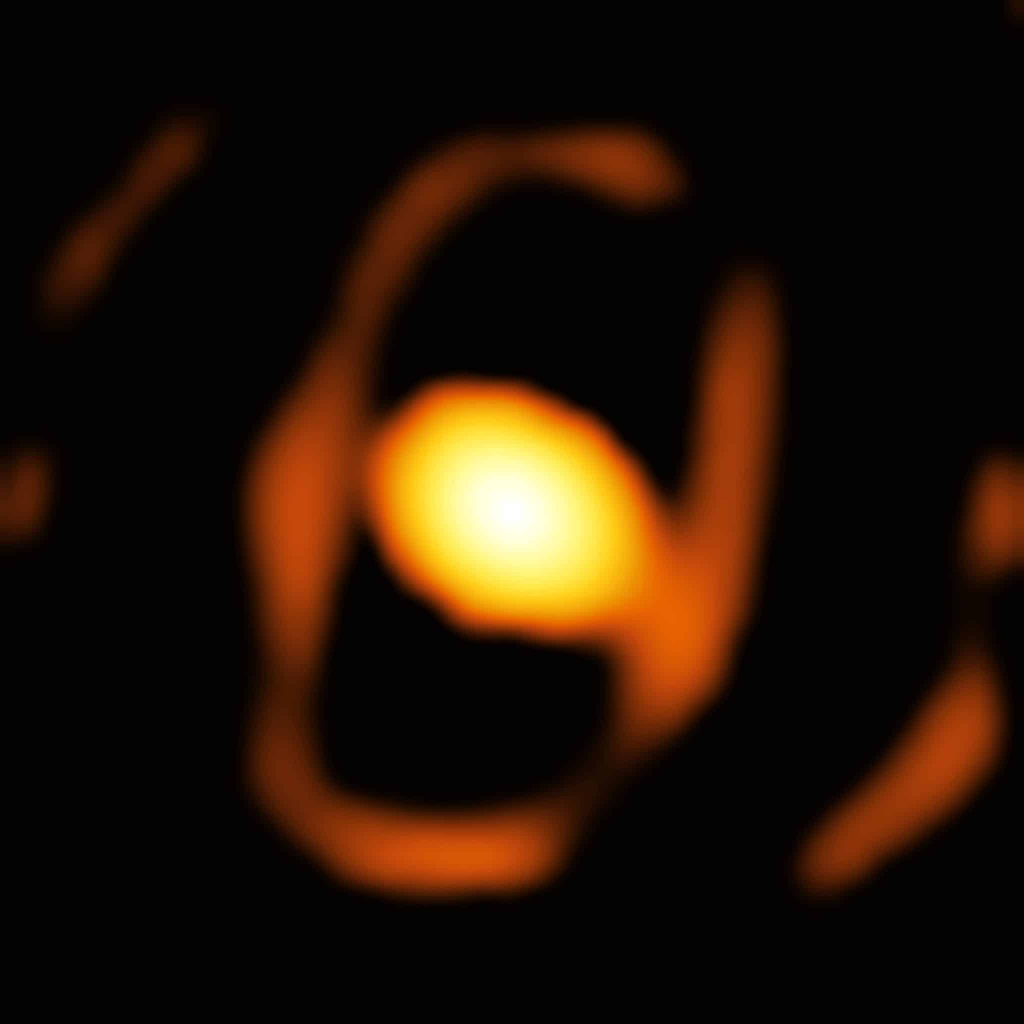Astronomers have captured the first-ever "portrait" of a star located in a different galaxy.
Massive stars live brightly but briefly, ultimately exploding as Type II supernovae or transforming into neutron stars and black holes. Throughout their lifespan, they undergo two phases as red giants: before nuclear reactions ignite in their cores and after hydrogen is depleted in the core. Stars with a mass up to 10 times that of the Sun become red giants and then supergiants. Stars exceeding 10 solar masses immediately become red supergiants.
When massive stars transition into red supergiants, they shed a significant portion of their mass. The processes occurring at this developmental stage play a crucial role in the star's further evolution, particularly in the early stages of its transformation into a supernova.
Astronomers observe red supergiants in the Milky Way, but their "siblings" in the Large Magellanic Cloud have a notable advantage — we have a more accurate understanding of the distances to these objects. The brightest red supergiant in the average infrared range in the Large Magellanic Cloud is the star WOH G64.
WOH G64 is the largest known star with a well-defined radius. It is 1,700 times larger than the Sun. If this giant were at the center of our Solar System, its boundary would lie between the orbits of Jupiter and Saturn. Once, it was a star 25 times more massive than our Sun. Currently, it is rapidly losing mass — up to one-thousandth of a solar mass per year.
Astronomers have been studying WOH G64 for decades. Keiichi Ohnaka and his colleagues first attempted to discern the features of this giant in 2005 using the VLT telescope array. Now, thanks to the GRAVITY instrument, they have succeeded in capturing a close-up image of this red supergiant — the first close-up image of a star in another galaxy in history. An article about this was published in the journal Astronomy and Astrophysics.

“This star is one of the most extreme among its kind, and any sudden change could bring it closer to an explosive finale,” explained co-author of the study, Jaco van Loon, director of the Kiel Observatory, who has been observing WOH G64 since the 1990s.
It turns out that WOH G64 is hidden within an elongated "cocoon" of dust. This cocoon surrounds the star at distances ranging from nine (at the closest point) to 13 star radii. The star itself is not visible — either it is too dim, or it is completely obscured by the dust of the cocoon. It is unclear why the cocoon has an egg-like shape. It is possible that the star has a companion that is pulling this material towards itself. Alternatively, there may be a flow of material streaming from the cocoon into a dust ring surrounding the star.
Although the dust ring is visible in the image, the authors of the study are skeptical about its existence. They suspect that the ring may be an artifact of the observational data processing. So far, even its shape is difficult to determine — it could be either a ring or a torus (“doughnut”).
Scientists plan to continue observing the star, anticipating updates to the GRAVITY+ instrument. In the data collected over the years regarding the star's spectrum, researchers have not detected changes, but there may be alterations in the structure of the space surrounding the star.